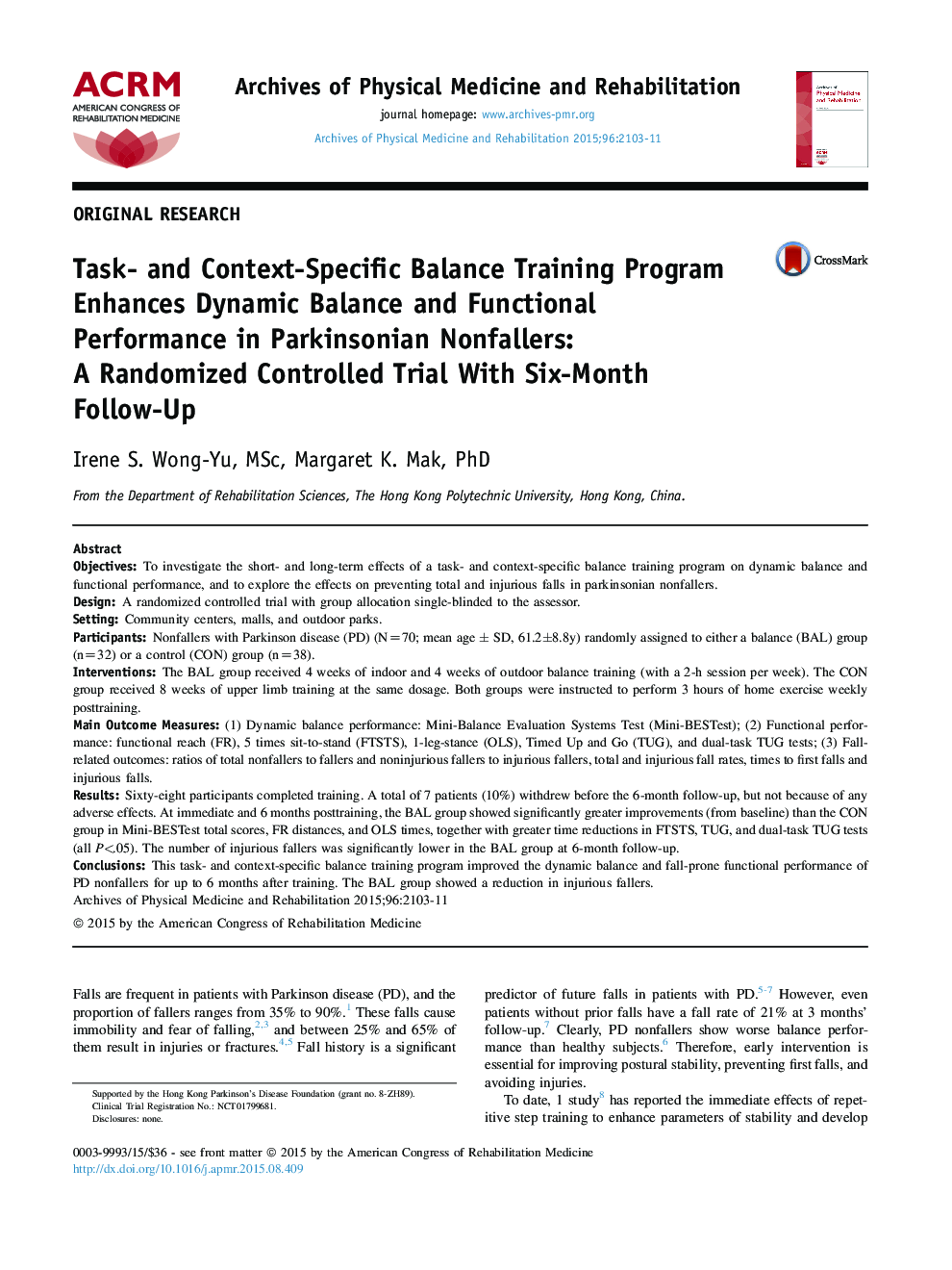| کد مقاله | کد نشریه | سال انتشار | مقاله انگلیسی | نسخه تمام متن |
|---|---|---|---|---|
| 3448192 | 1595674 | 2015 | 9 صفحه PDF | دانلود رایگان |
• We conducted a randomized controlled trial on parkinsonian nonfallers.
• Participants received 8-week task- and context-specific balance training.
• Participants practiced fall-prone activities in both indoor and outdoor environments.
• Dynamic balance and functional performance were enhanced up to 6-month follow-up.
• Balance training has reduced the number of injurious fallers.
ObjectivesTo investigate the short- and long-term effects of a task- and context-specific balance training program on dynamic balance and functional performance, and to explore the effects on preventing total and injurious falls in parkinsonian nonfallers.DesignA randomized controlled trial with group allocation single-blinded to the assessor.SettingCommunity centers, malls, and outdoor parks.ParticipantsNonfallers with Parkinson disease (PD) (N=70; mean age ± SD, 61.2±8.8y) randomly assigned to either a balance (BAL) group (n=32) or a control (CON) group (n=38).InterventionsThe BAL group received 4 weeks of indoor and 4 weeks of outdoor balance training (with a 2-h session per week). The CON group received 8 weeks of upper limb training at the same dosage. Both groups were instructed to perform 3 hours of home exercise weekly posttraining.Main Outcome Measures(1) Dynamic balance performance: Mini-Balance Evaluation Systems Test (Mini-BESTest); (2) Functional performance: functional reach (FR), 5 times sit-to-stand (FTSTS), 1-leg-stance (OLS), Timed Up and Go (TUG), and dual-task TUG tests; (3) Fall-related outcomes: ratios of total nonfallers to fallers and noninjurious fallers to injurious fallers, total and injurious fall rates, times to first falls and injurious falls.ResultsSixty-eight participants completed training. A total of 7 patients (10%) withdrew before the 6-month follow-up, but not because of any adverse effects. At immediate and 6 months posttraining, the BAL group showed significantly greater improvements (from baseline) than the CON group in Mini-BESTest total scores, FR distances, and OLS times, together with greater time reductions in FTSTS, TUG, and dual-task TUG tests (all P<.05). The number of injurious fallers was significantly lower in the BAL group at 6-month follow-up.ConclusionsThis task- and context-specific balance training program improved the dynamic balance and fall-prone functional performance of PD nonfallers for up to 6 months after training. The BAL group showed a reduction in injurious fallers.
Journal: Archives of Physical Medicine and Rehabilitation - Volume 96, Issue 12, December 2015, Pages 2103–2111
